Slice Hot Dogs into Thirds
Some folks like to smoke them whole first and then slice, however, I think you get more coverage when all edges are exposed.
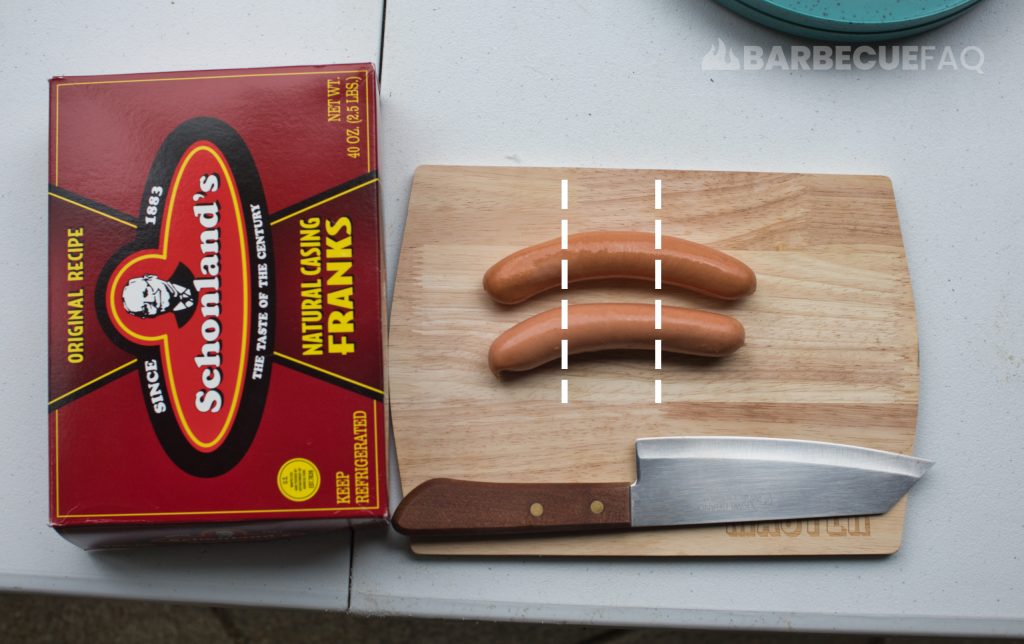
Use Mustard to Bind Dry Rub to Hot Dogs and Then Apply Rub
If you don’t have mustard, a great alternative is a neutral cooking oil.
Put them into an aluminum pan, and add mustard.
Mix around so that all surfaces of are covered in mustard.
Then apply your favorite bbq rub.
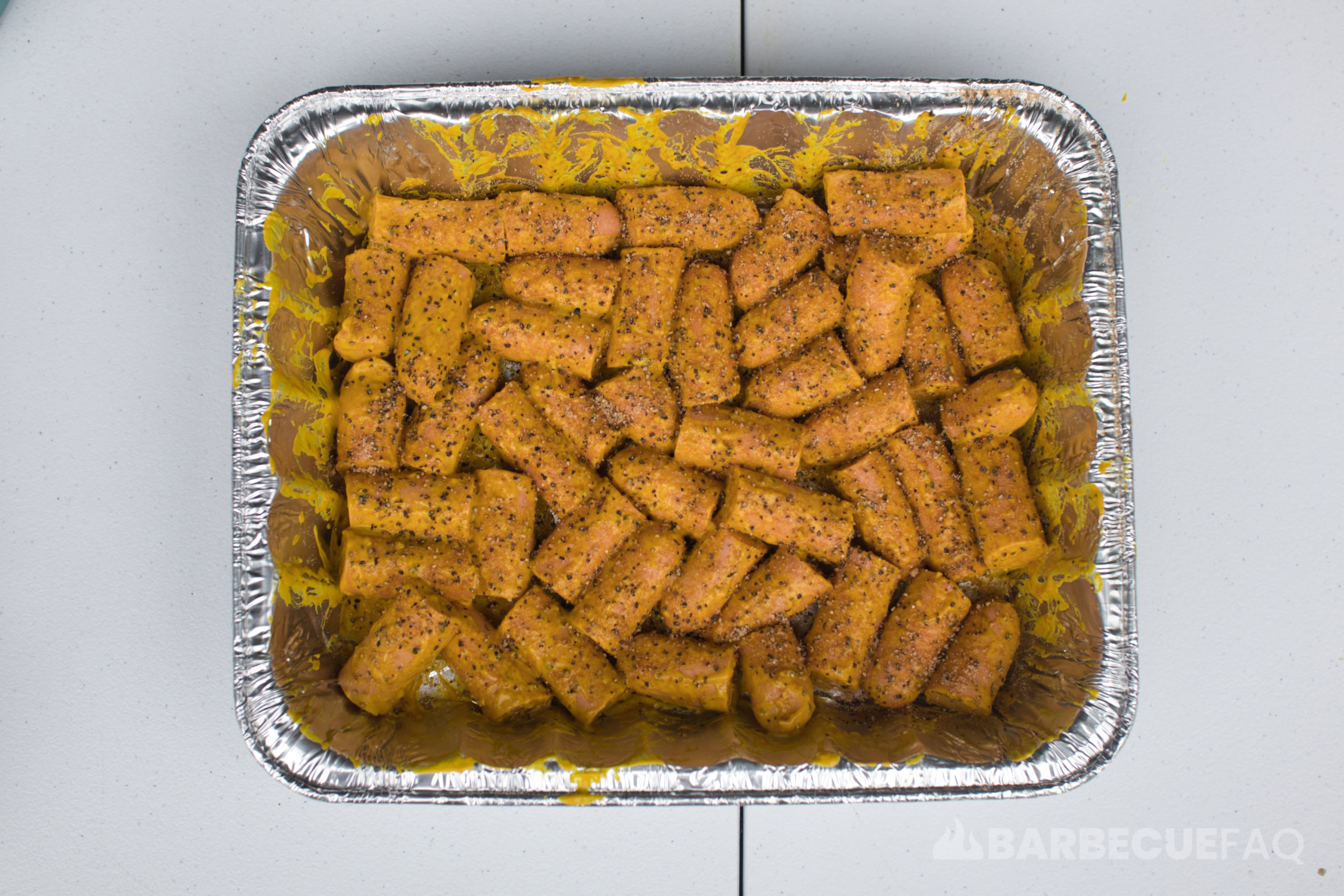
Get Your Smoker to 225F
I used my weber kettle.
Put them on indirect and ensure none of them are touching.
Add your favorite hardwood – I used post-oak.
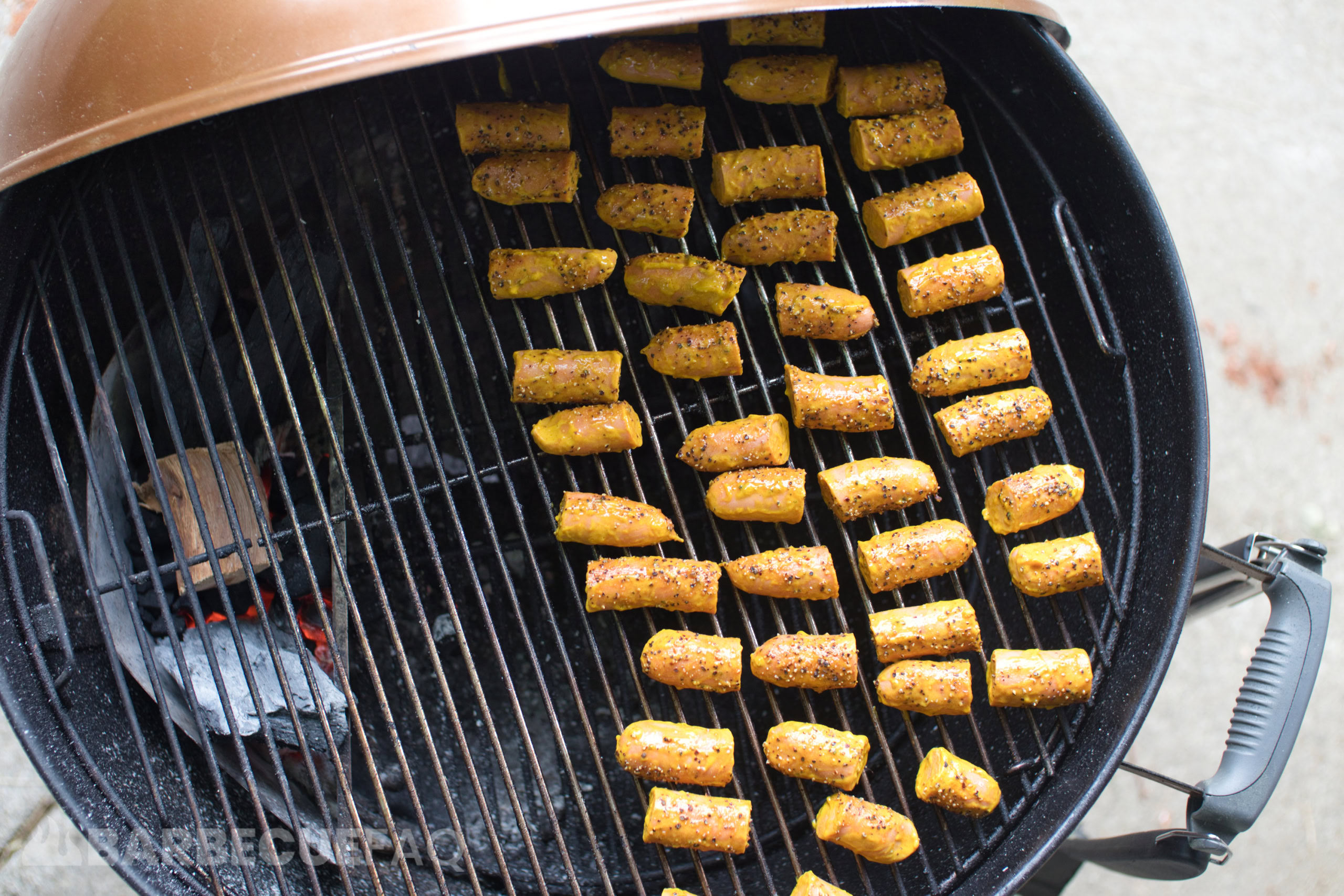
You want to smoke long enough for the mustard to burn off.
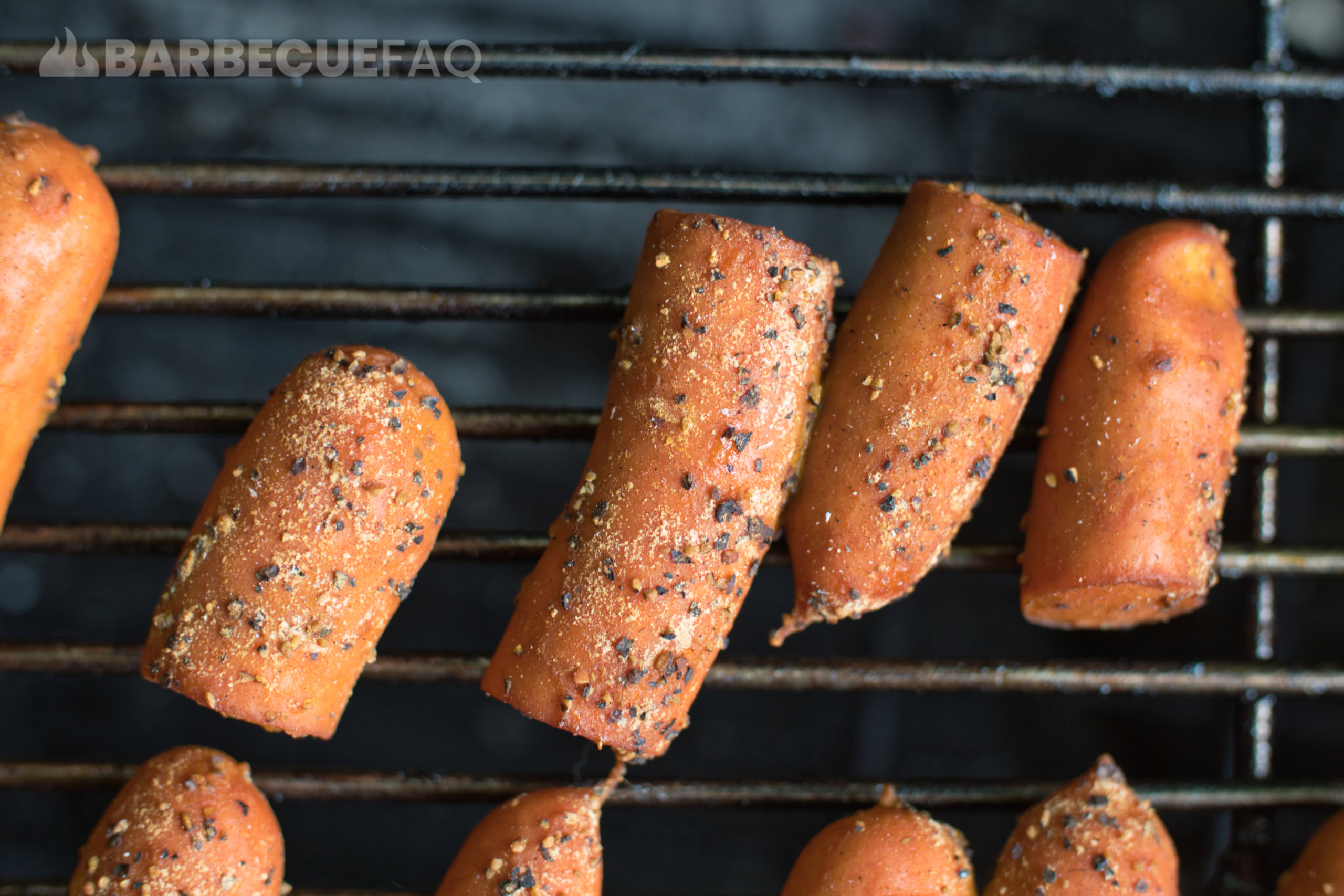
After 1 Hour of Smoking, Put Into an Aluminum Pan
In order to glaze, you can use your favorite barbecue sauce.
With recipes like this, I like to use up whatever I have on-hand.
I used roughly 1/3 cup of Sweet Baby Ray’s and 1/3 cup of Stubb’s.
I also used 2 tablespoons of butter and a few shakes of BBQ Rub.
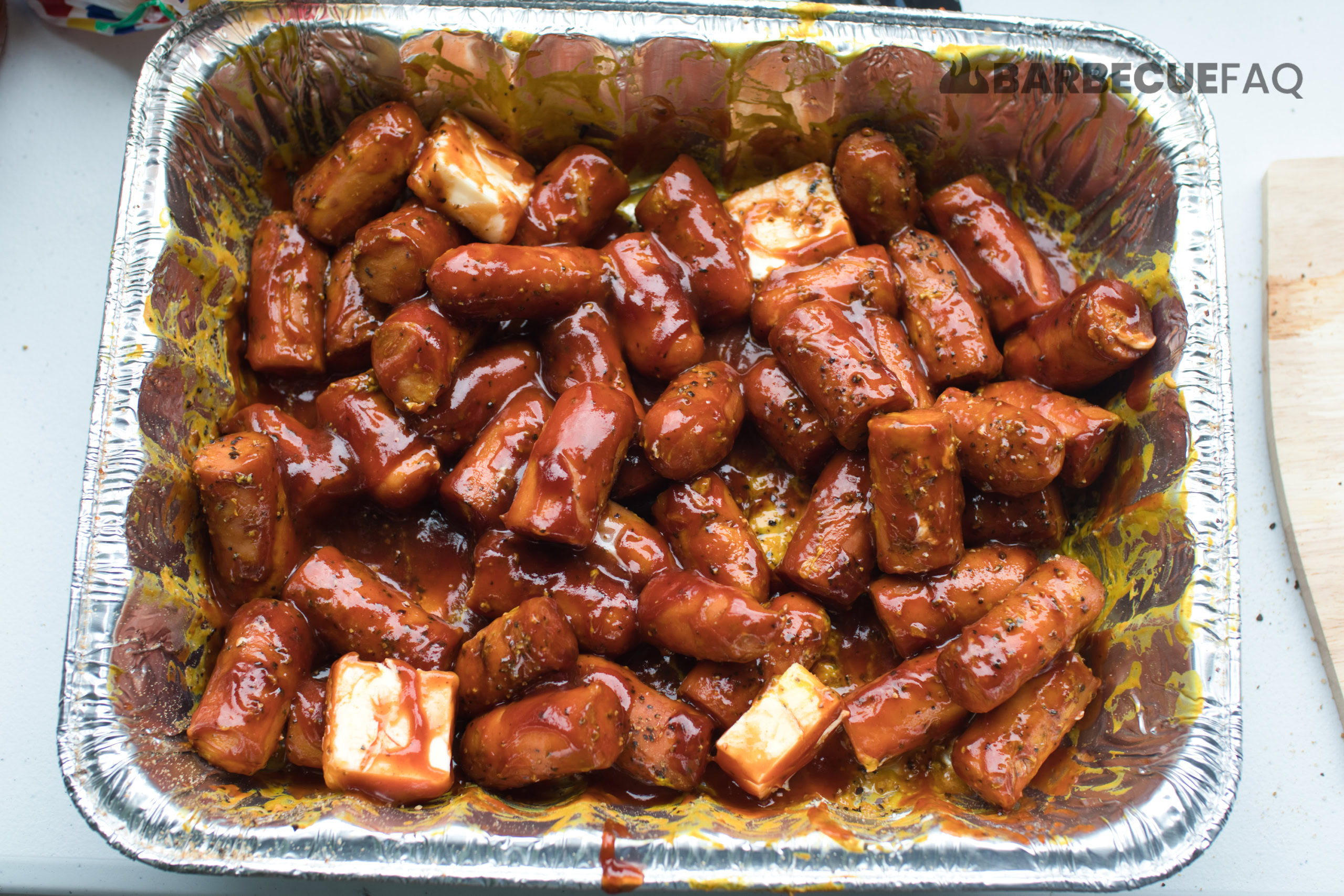
Put in your oven set to 375F for 30 minutes.
Every 10 minutes or so stir the hot dog burnt ends around so that the butter was mixed in with the sauce.
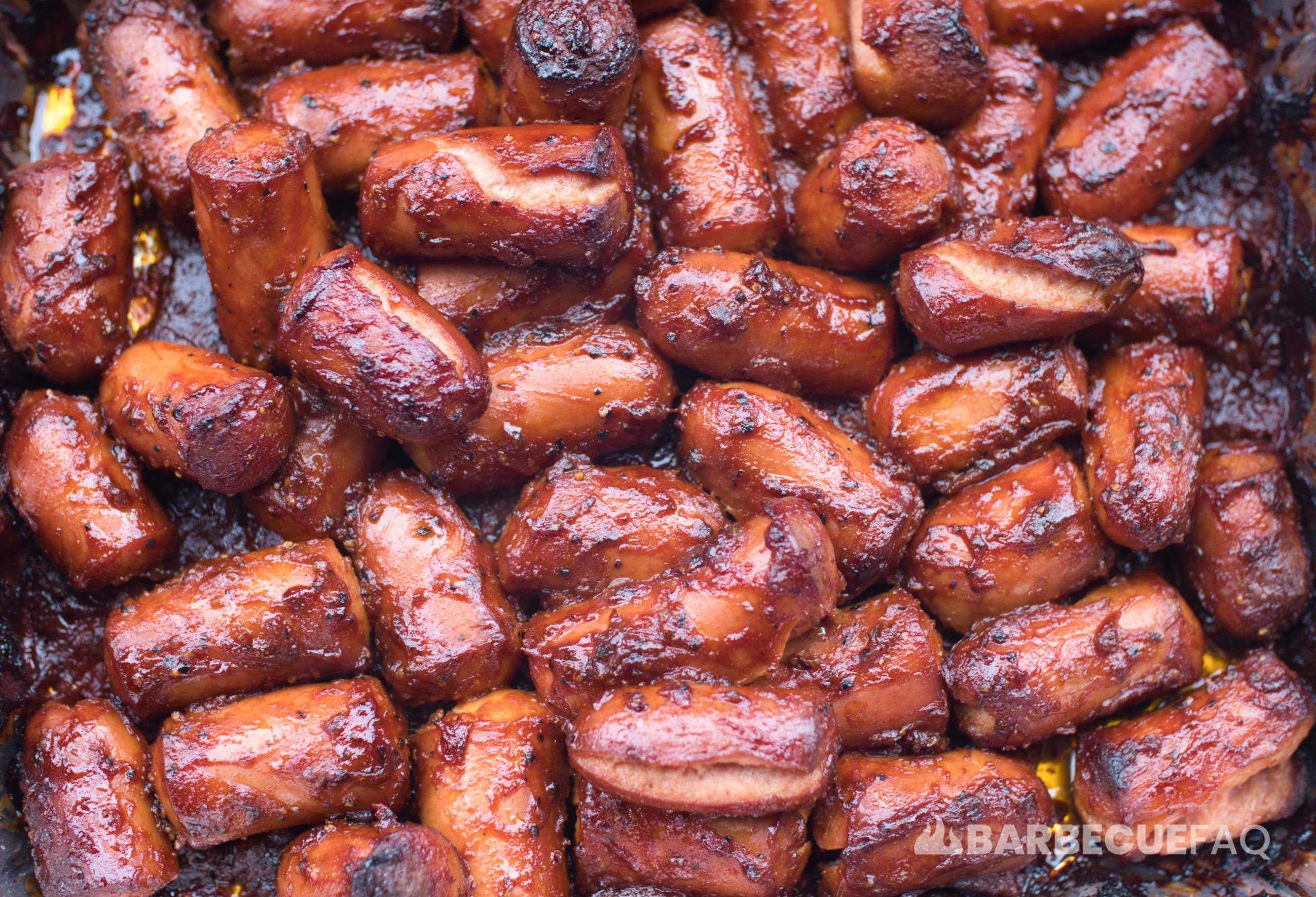
Hot Dog Burnt Ends Recipe
Ingredients
- Hot Dogs
- Mustard
- 3 tbsp Your favorite BBQ Rub
Glaze
- 2/3 Cup Your Favorite BBQ Sauce
- 2 tbsp Unsalted Butter
Instructions
- Slice hot dogs into thirds.Hot Dogs
- Put sliced hot dogs into an aluminum pan. Use mustard as a binder.Mustard
- Apply rub liberally to mustard covered hot dogs.3 tbsp Your favorite BBQ Rub
Smoke the Hot Dog Burnt Ends
- Set your smoker to 225F. We used post oak but use whatever hardwood you prefer.
- Place hot dog burnt ends on the grill so that they aren't touching.
- Smoke for 1 hour.
Glaze Hot Dog Burnt Ends
- After 1 hour, put the smoked hot dogs into an aluminum pan.
- Add your favorite barbecue sauce and 2 tablespoons of unsalted butter.2/3 Cup Your Favorite BBQ Sauce, 2 tbsp Unsalted Butter
- Either increase your smokers temperature to 375F or bring inside to your oven.
- Place into your oven and stir every 10 minutes or so just so the melted butter is incorporated into the sauce. You also want all surfaces of the hot dogs covered in sauce.
- After some time the glaze will start to caramelize. This process took us around 30 minutes. However, be sure to keep an eye on them as it depends on how much sauce you add.
- Once the glaze is set and the sugars have caramelized, bring outside and serve with toothpicks to eat and enjoy!


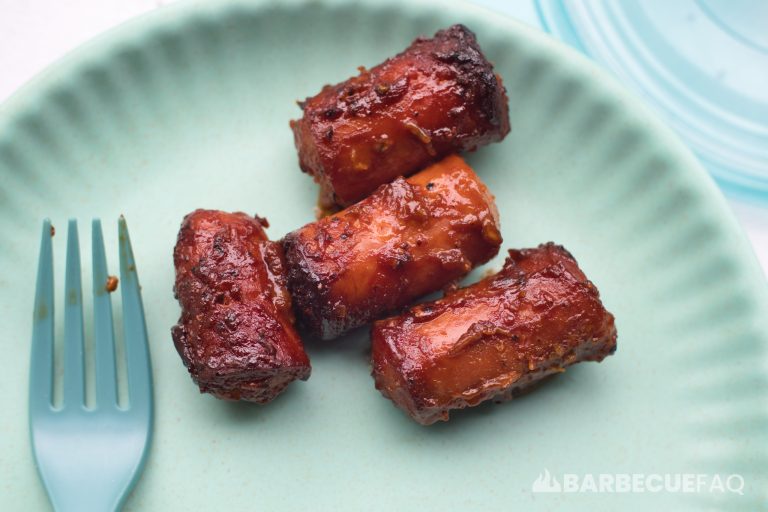

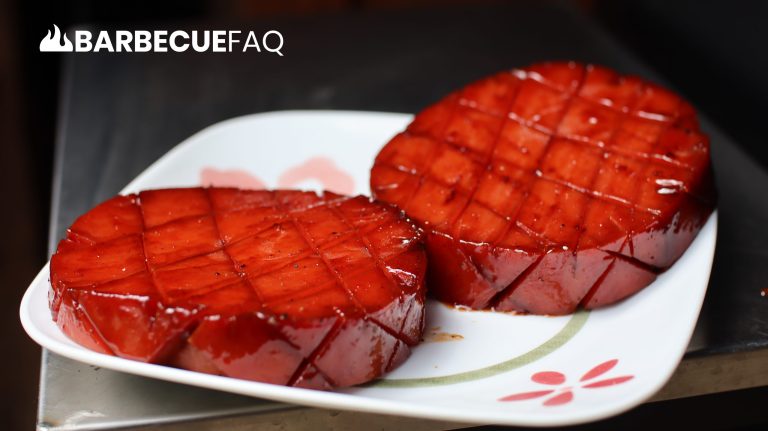
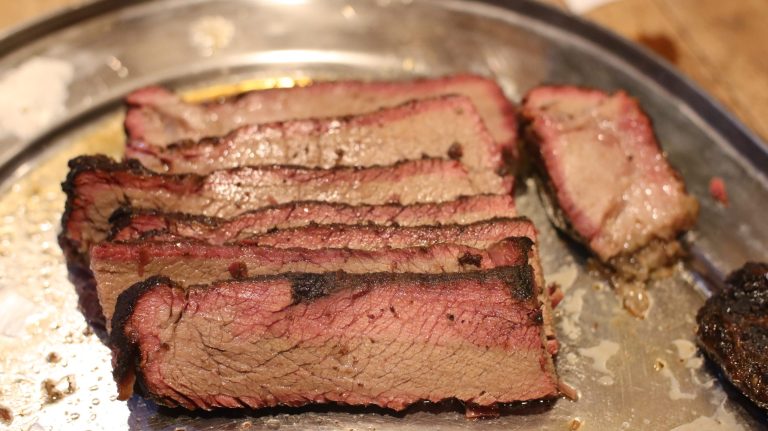
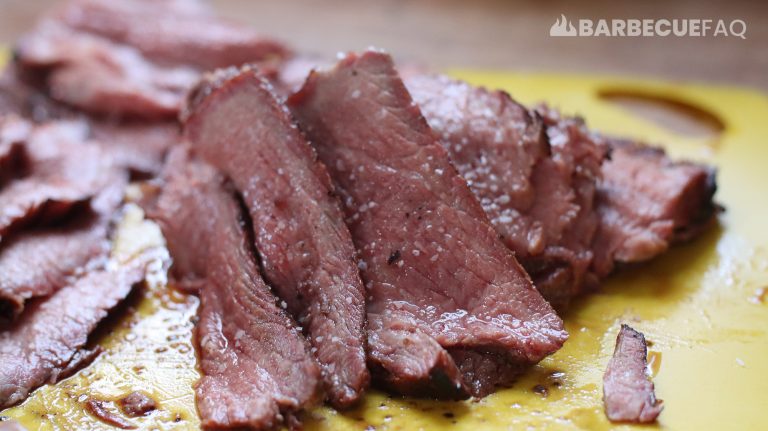
4 comments
Richard Goodwin
Two big thumbs up from me. Delicious recipe!
Dylan Clay
Cheers Richard!
Pete
These are a great thing to make in the winter to get your barbecue fix. Don’t take to long and taste great. Thanks for the article.
Dylan Clay
Totally agree Pete!